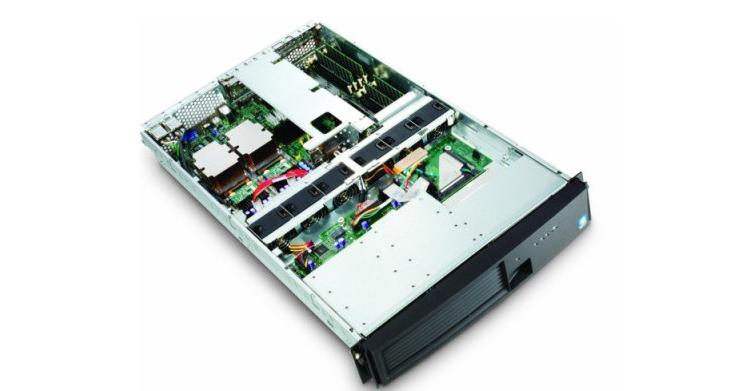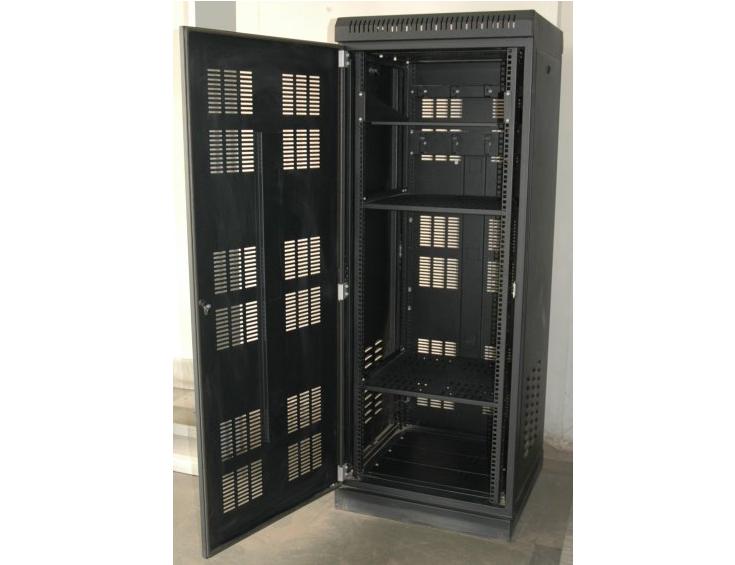Servers: Racks, Blades and Towers
Unlike desktops, tower servers traditionally use 1U, 2U, 3U, 4U, 5U, 6U or 7U cabinets which are installed on the racks. The numbers give the names of the offices formats that indicate precisely the number of stalls they occupy in the racks. The offices occupy a single 1U bay, the two occupy 2U and 4U occupy four, with one rack holds up to 42 standard size bays:

The servers in 1U format are preferred by dedicated servers hosting service providers, rack space providers and data centers to use because they are very compact (only 4.4 cm), which allows you to install a large number of servers per rack. The main limitations of the format are the limitations with respect to ventilation (due to the small internal space), which complicates the use of processors with high power consumption and the need to use special fonts and coolers, inflating the cost of the projects. In addition to the basic components, usually spare space to install two or four HDDs 3.5″ (according to the arrangement of other components) and a single expansion board installed horizontally with the help of a riser.
Then we have the 2U chassis. They use “normal” fountains and coolers and therefore end up being a little cheaper. The inner space becomes larger and more suitable for 2U servers with two or more processors, or processors that use high consumption. The height is not sufficient to install expansion cards vertically, as in desktop computers, but it is possible to use a riser (like in the case of 1U) using plates or half-height (lower plates, which have half the height of the normal plates).
 Finally, we have the larger servers, using 3U or 4U chassis. There are 6U servers, but they are rare: This format is typically used for disk arrays and enclosures for blade servers. Use of a 3U cabinet or greater completely eliminates the problems with space, allowing you to use expansion cards vertically and a large number of installed hard drives in removable bays, but causes the server to occupy more space in the rack, which increases the costs to host it in a data center, where you pay an extra fee per pen used.
Finally, we have the larger servers, using 3U or 4U chassis. There are 6U servers, but they are rare: This format is typically used for disk arrays and enclosures for blade servers. Use of a 3U cabinet or greater completely eliminates the problems with space, allowing you to use expansion cards vertically and a large number of installed hard drives in removable bays, but causes the server to occupy more space in the rack, which increases the costs to host it in a data center, where you pay an extra fee per pen used.
Another format that is becoming increasingly popular is the blade servers (blade comes from the word “blade” indicating the restricted format), an ingenious idea to further increase the density of servers and allow sharing of components in common, such as power supplies and optical discs.
The idea is that, instead of having 10 1U servers, with 10 sources (or 20, if redundant sources were used), 20 network cables (each server typically uses two cables, one for the network and one for management or redundancy) plus power cords, cables used by KVM and so on, you can use a single cabinet, with an equivalent number of blade servers.
Each blade is a server complete with processor, memory, disks and network card. Due to the small size, blade servers typically use low power processors and 2.5″ hard drives. Earlier, it was common to use processors from Transmeta and VIA, but they ended up being almost completely replaced by Core 2 Duo processors and updated Xeon versions (in case of Intel) or Athlon X2, Opteron or Phenom (in the case of the AMD), which is much faster, but still relatively inexpensive. The case of hard disks, the disks of 2.5″ are preferred by offering lower access times (although lost with respect to transfer rate), and the power consumption and small dimensions.
Servers in cabinets also exist and account for nearly one quarter of the servers sold, not counting the mounted servers, which use components and enclosures desktop PCs. Besides being the most common in local networks and companies with fewer servers, where the issue of space is not a problem, they are also becoming common in many data centers, breaking the tradition of some racks.
Although occupying a little more space than a 2U enclosure, the towers offer the advantage of the fact that they are cheaper, which in many cases offset the greater use of space. Here we have photos of one of the sections of a data center where towers are used:

- How Cloud Computing Is Changing The Labor Market - March 25, 2015
- Adopting Infrastructure as a Service Can be a Good Deal - March 17, 2015
- Will Virtualize? Take These Six Points Into Consideration - March 12, 2015
